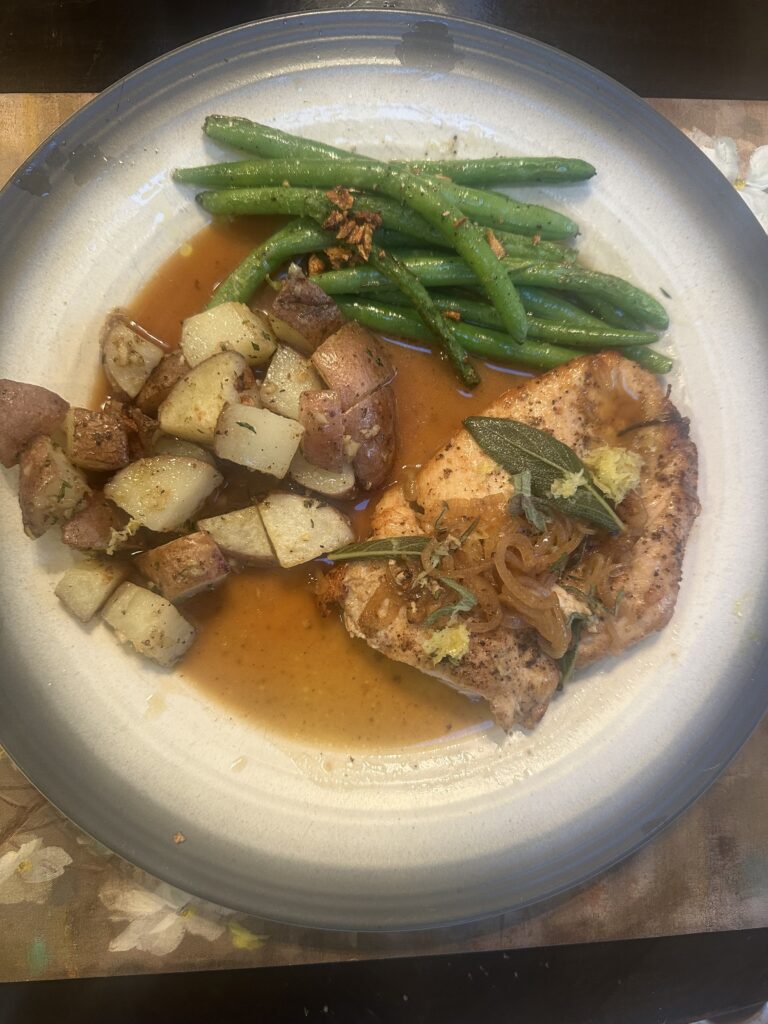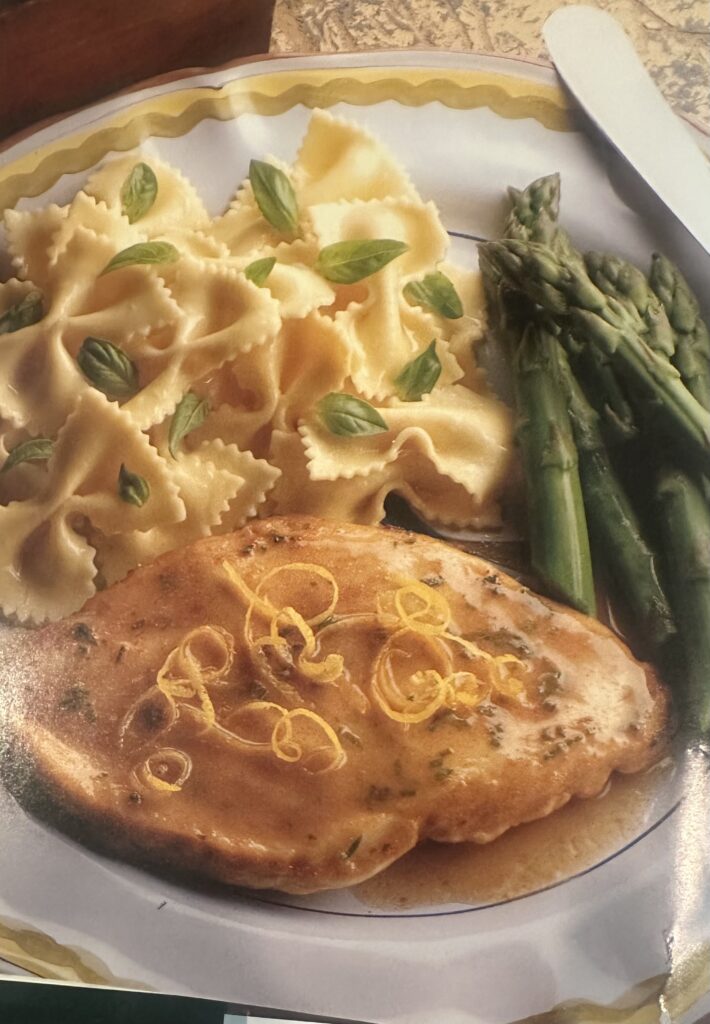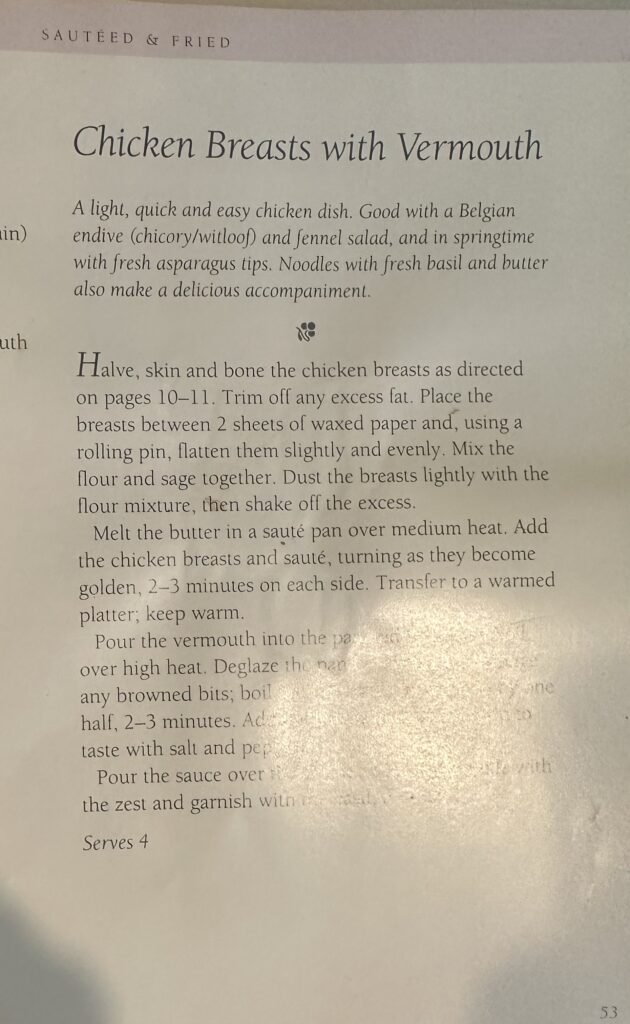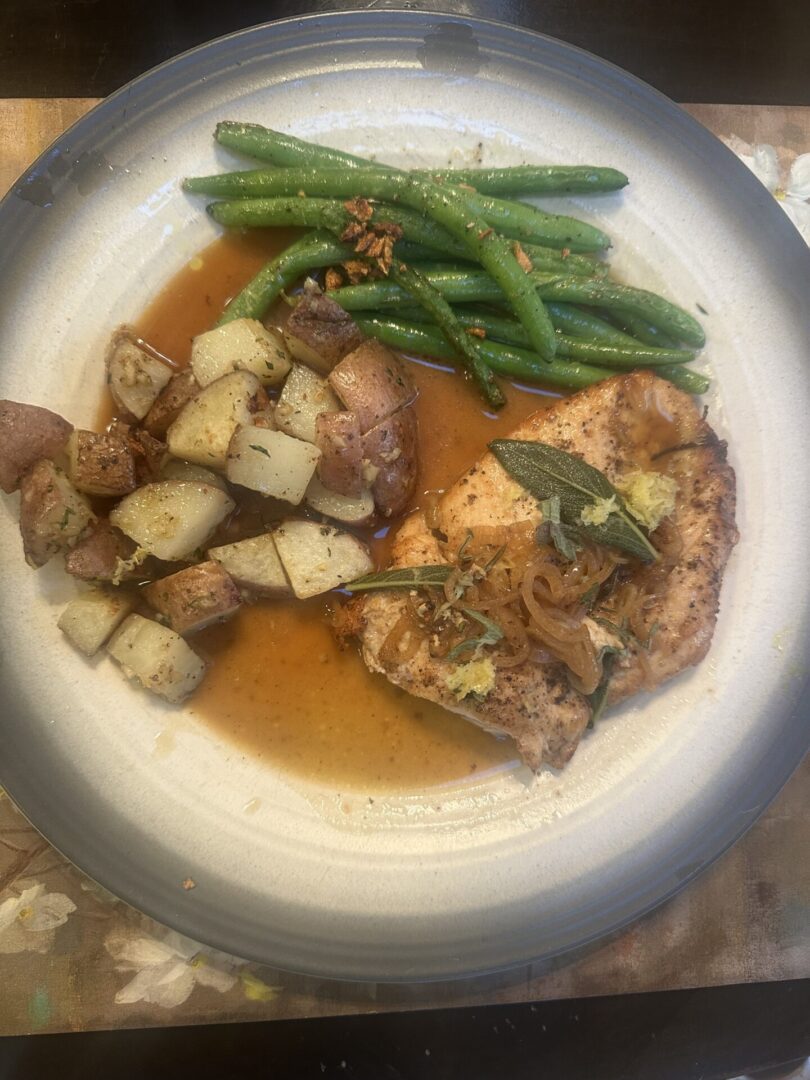
One of the first cookbooks ever given to me was a Williams Sonoma book focused entirely on chicken. Page 53, in particular, made a lasting impression — a simple, elegant recipe for pan-roasted chicken with sage and vermouth. I haven’t found the original version online, but it’s stuck with me ever since.
This version is adapted from a lovely post on A Garden for the House, using sage as the sole herb to highlight its woodsy flavor. The result is light, simple, and delicious — exactly the kind of meal that feels special without being fussy.
Ingredients
- 4 boneless-skinless chicken breasts
- Kosher salt and freshly ground black pepper
- 2 tablespoons olive oil
- 3 tablespoons unsalted butter
- 2 shallots, finely chopped
- 10 fresh sage leaves
- 1/2 cup dry vermouth (I use the basic Martini & Rossi but it can be dialed-up with another brand like Noilly Prat)
Instructions
- Preheat oven to 400°F.
- Pat the chicken dry, pound thin to just under a quarter inch and season both sides generously with salt and pepper.
- Heat olive oil and 1/2 of the butter in an oven-safe skillet over medium-high heat. Sear both sides of the chicken until golden and crisp, about 5-7 minutes. Flip and cook for 2-3 more minutes.
- The chicken should be cooked at this point so keep in a warm oven until the finishing stage.
- Remove chicken to a plate and tent loosely with foil. Pour off all but 1 tablespoon of fat from the skillet.
- Return skillet to stovetop over medium heat. Add remaining butter, shallots, and sage. Sauté for 2–3 minutes until shallots soften and sage is fragrant.
- Pour in vermouth and bring to a simmer, scraping up browned bits. Let reduce by half, 3–5 minutes.
- Return chicken to the skillet to coat in the sauce or spoon sauce over plated chicken to serve.
Serving Suggestion
Serve with roasted red potatoes with garlic and rosemary and add a green (here I’ve used a simple green bean saute. Some crusty bread will soak up the sage-vermouth sauce. A lightly chilled white Burgundy or a crisp Sauvignon Blanc complements the delicate herbal flavors beautifully.



